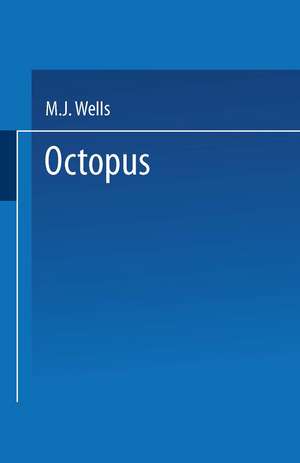Octopus: Physiology and Behaviour of an Advanced Invertebrate
Autor M. J. Wellsen Limba Engleză Paperback – 20 noi 2013
Preț: 701.83 lei
Preț vechi: 825.69 lei
-15% Nou
Puncte Express: 1053
Preț estimativ în valută:
134.29€ • 140.96$ • 111.47£
134.29€ • 140.96$ • 111.47£
Carte tipărită la comandă
Livrare economică 10-24 aprilie
Preluare comenzi: 021 569.72.76
Specificații
ISBN-13: 9789401724708
ISBN-10: 9401724709
Pagini: 440
Ilustrații: XIV, 417 p. 186 illus., 11 illus. in color.
Dimensiuni: 140 x 216 x 23 mm
Greutate: 0.56 kg
Ediția:Softcover reprint of the original 1st ed. 1978
Editura: SPRINGER NETHERLANDS
Colecția Springer
Locul publicării:Dordrecht, Netherlands
ISBN-10: 9401724709
Pagini: 440
Ilustrații: XIV, 417 p. 186 illus., 11 illus. in color.
Dimensiuni: 140 x 216 x 23 mm
Greutate: 0.56 kg
Ediția:Softcover reprint of the original 1st ed. 1978
Editura: SPRINGER NETHERLANDS
Colecția Springer
Locul publicării:Dordrecht, Netherlands
Public țintă
ResearchCuprins
1. Introduction.- 2. An outline of the anatomy.- 3. Respiration, circulation and excretion.- 4. Feeding and digestion.- 5. Reproduction and growth.- 6. Endocrinology.- 7. An inventory of the sense organs.- 8. What an octopus sees.- 9. Touch and the role of proprioception in learning.- 10. Effectors and motor control.- 11. Learning and brain lesions: 1: Mainly tactile learning.- 12. Learning and brain lesions: 2: Visual learning.- References.- Author index.









